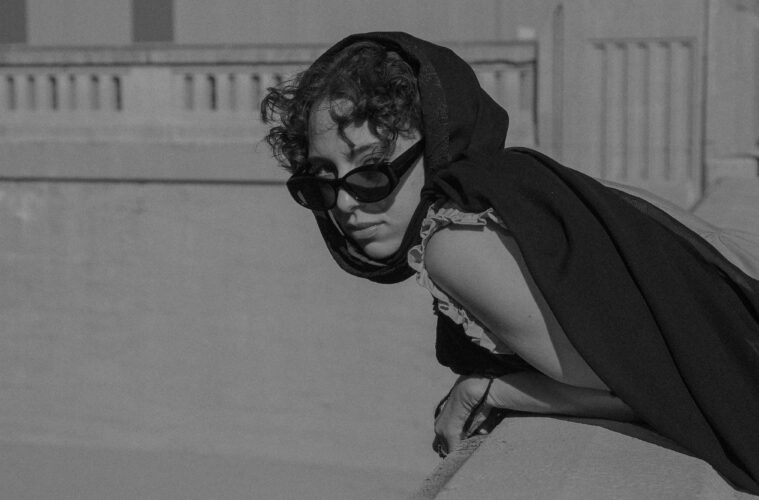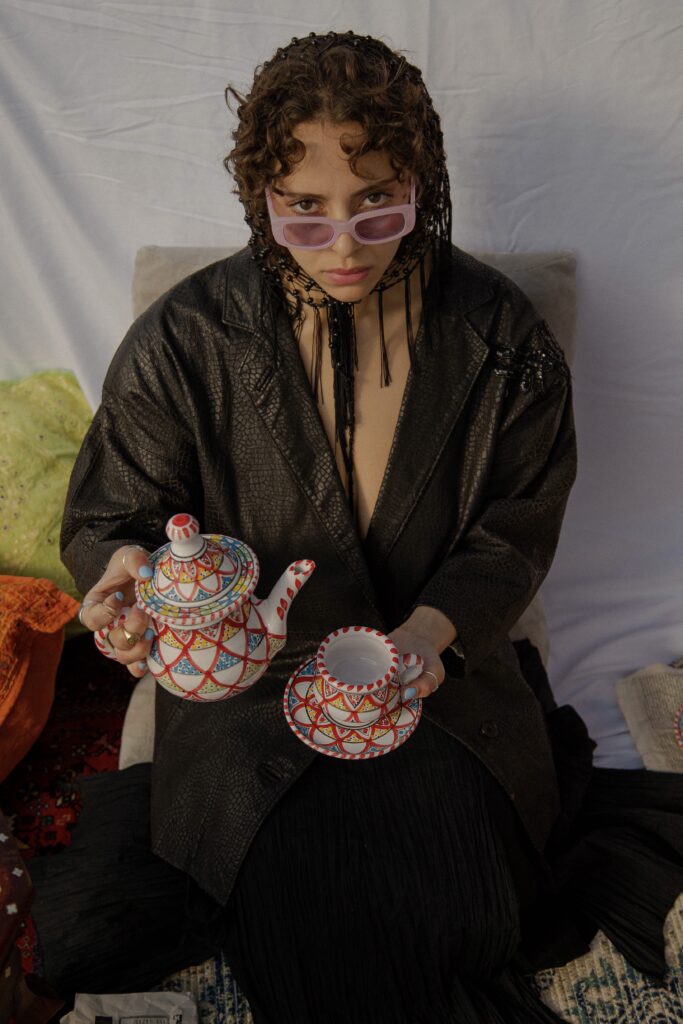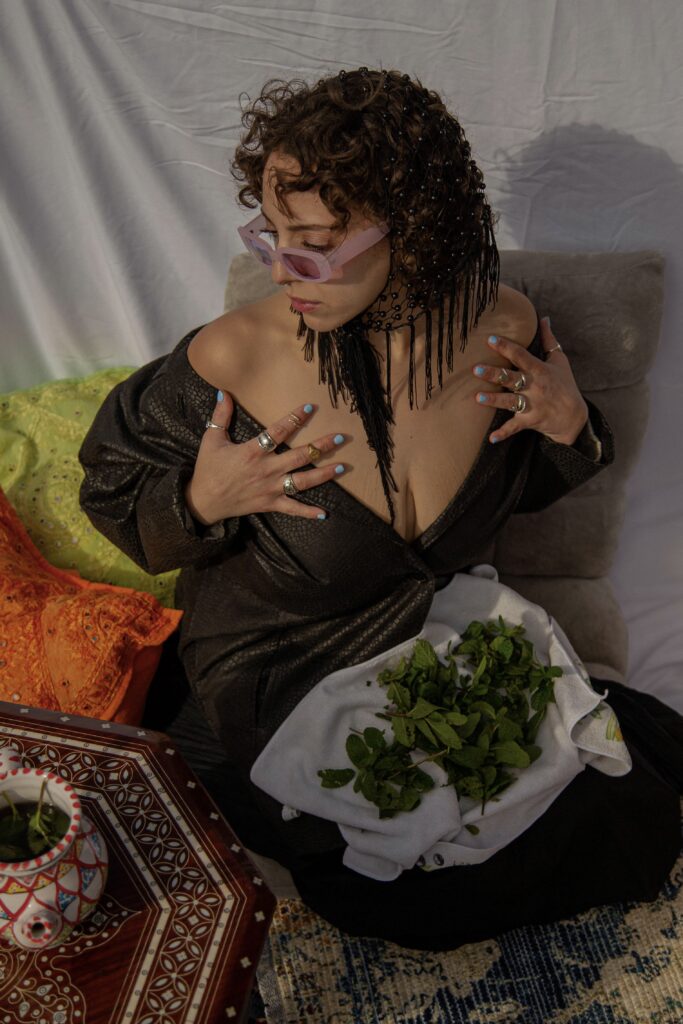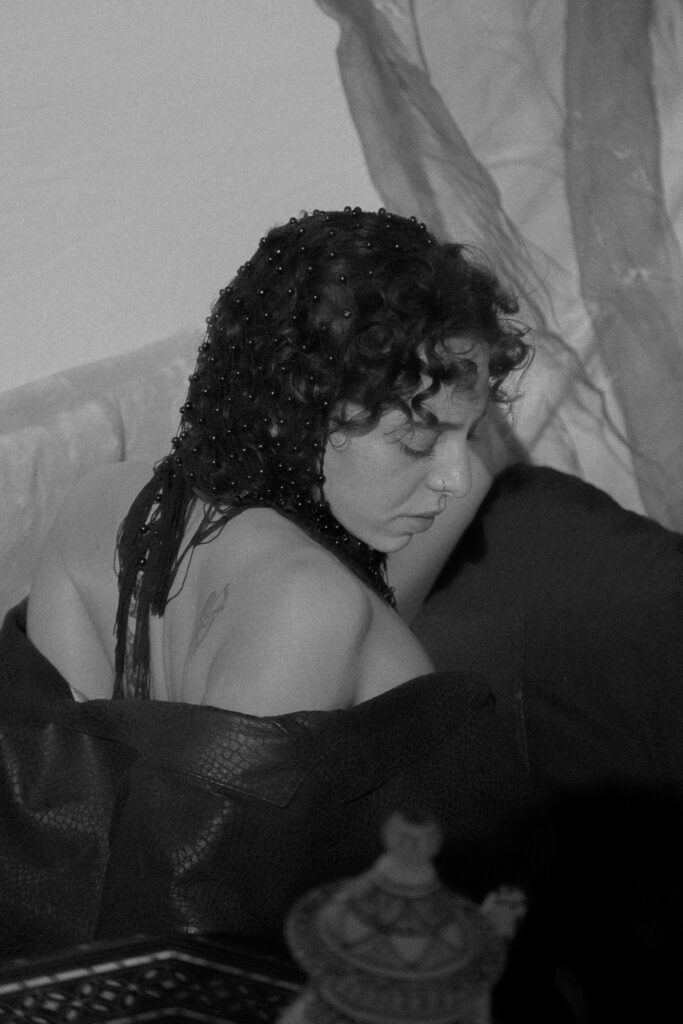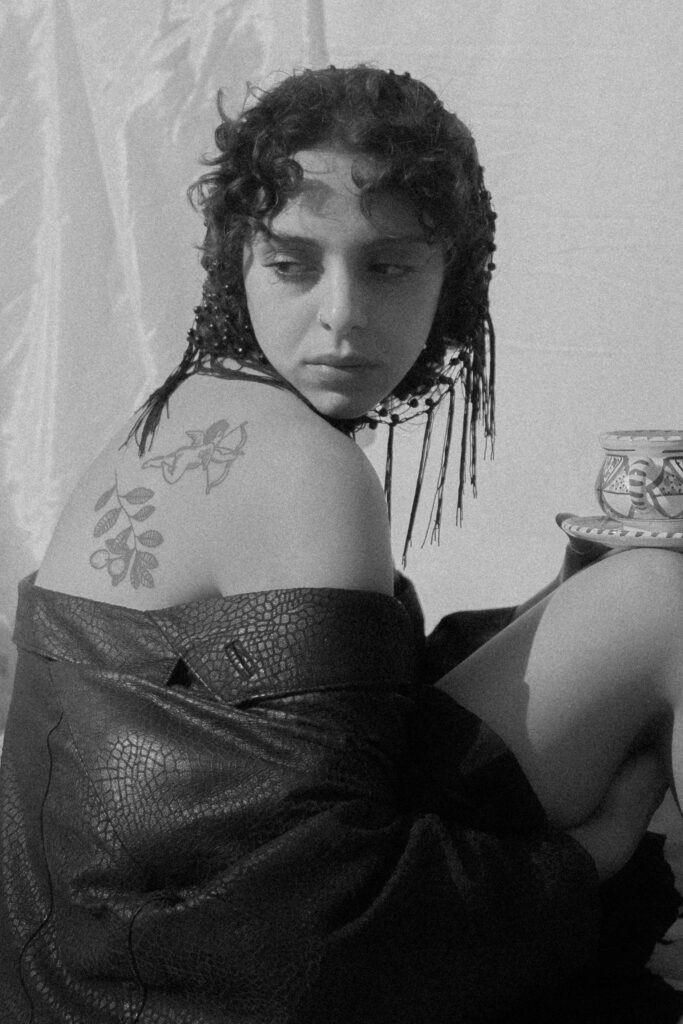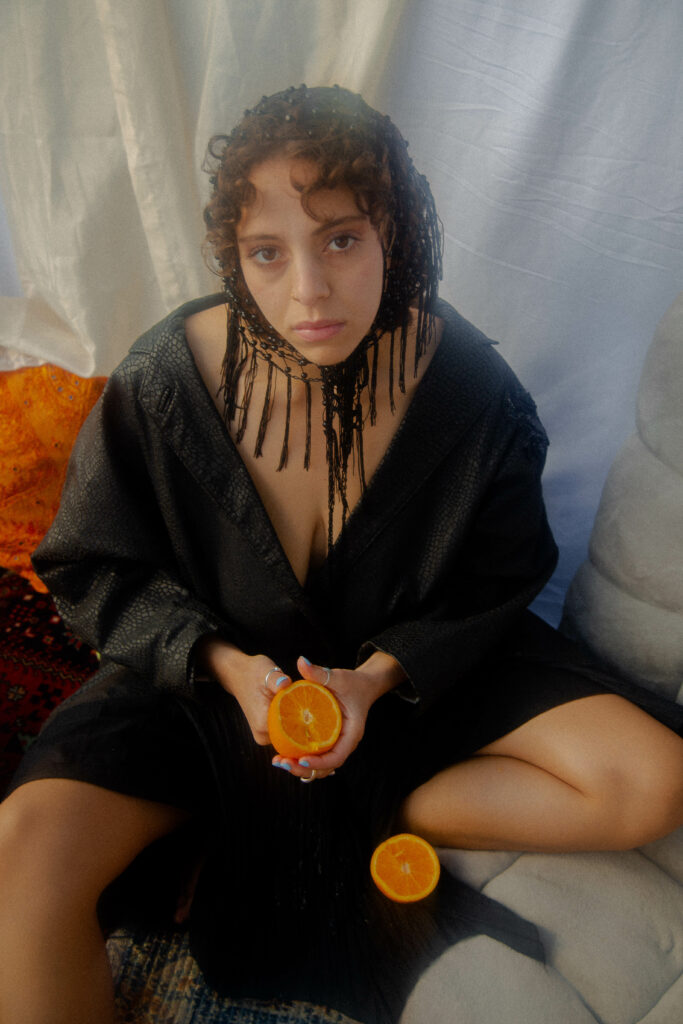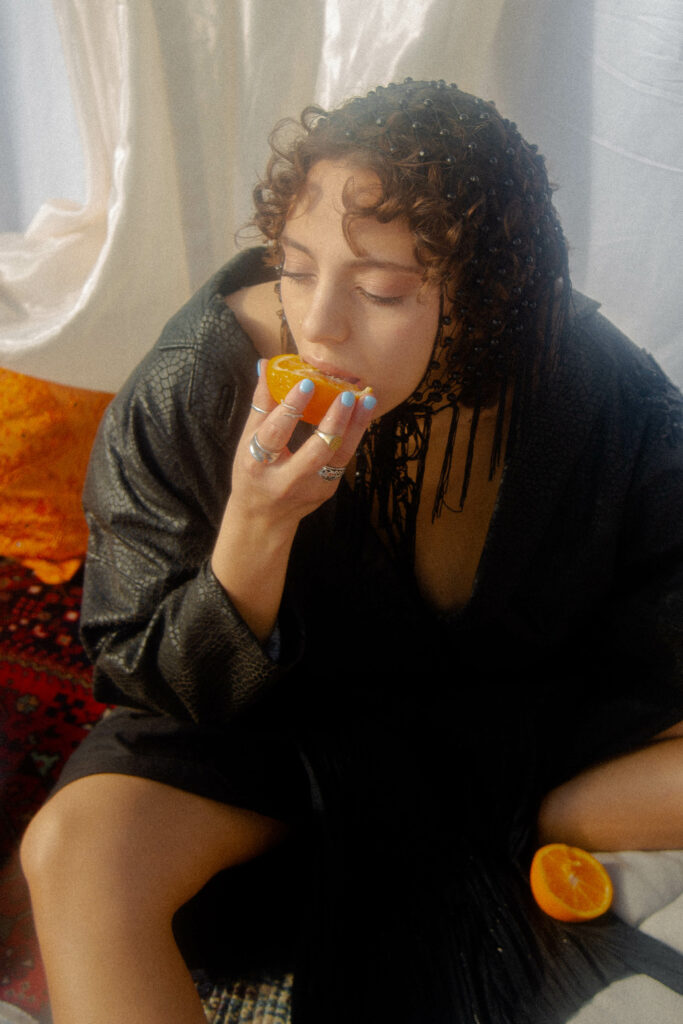Words and Creative Direction by Dina Shihabi
Modeled by Dina Shihabi
Photography by Saria Chatila
Warm, sunny day, 16°. Sweet Moroccan atay (tea): wilted mint & caramelized sukkar. Mama wouldn’t have been happy with the sukkar in my atay—it’s bad for me. I make sure to add 3 heaping tablespoons to the meticulously hand-painted pot.
Hidden tattoos, prohibited desire, and sinful identities — we’re either permitted or forbidden. The Arab cosmos are rooted in a harsh heteropatriarchy that is nonetheless normalized. We’re taught that there’s one way to be Arab, but the diaspora teaches the endless ways to be Arab. Shame and reputation: Ma kat 7eshmish? Do you have no shame? Kif btestarji? How dare you? Our societies normalize chaos, misery, and trauma in the name of an imaginary untainted reputation.
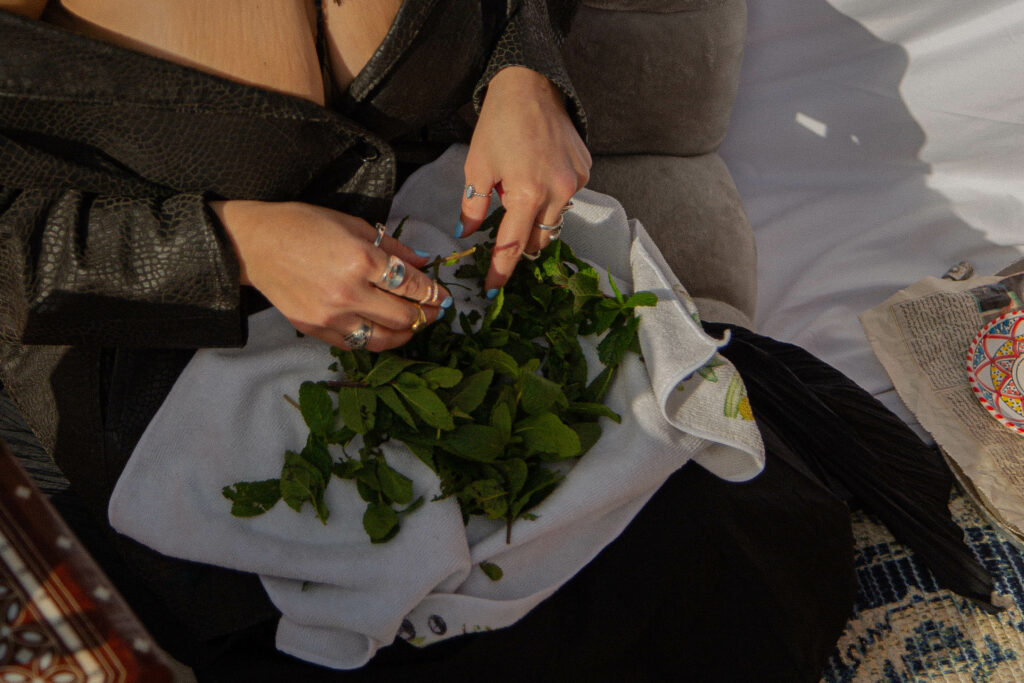
Photography by Saria Chatila; Modeled by Dina Shihabi
A mama and baba existing and living in dissonance is the patriarchy’s harmony. The diasporic solidarity and understanding of unfamiliar yet common ground make space for a grey area, for a permissible identity amongst the verboten, for a redefined Arab identity. That is an identity rooted in hanan (compassion and kindness), 7ob (love), self-care, healing, revolution, feminism, queerness, celebration, and inclusivity.
It’s the battle between two worlds: a metaphorical jahannam (hell) and jannah (heaven), in or out, accepted or rejected, permitted or forbidden. But we can make our heaven on Earth, a “heaven in community.”
I had forgotten, but the second I remembered where I came from was the second I started to make sense of my identity. The creative process is healing because it allows us to revisit traumatic and painful experiences in safety; the creative digestion of the process entails digesting the past. It’s therapeutic, it’s medicinal. I found healing in community and in redefining, reappropriating, and reclaiming Arabness.
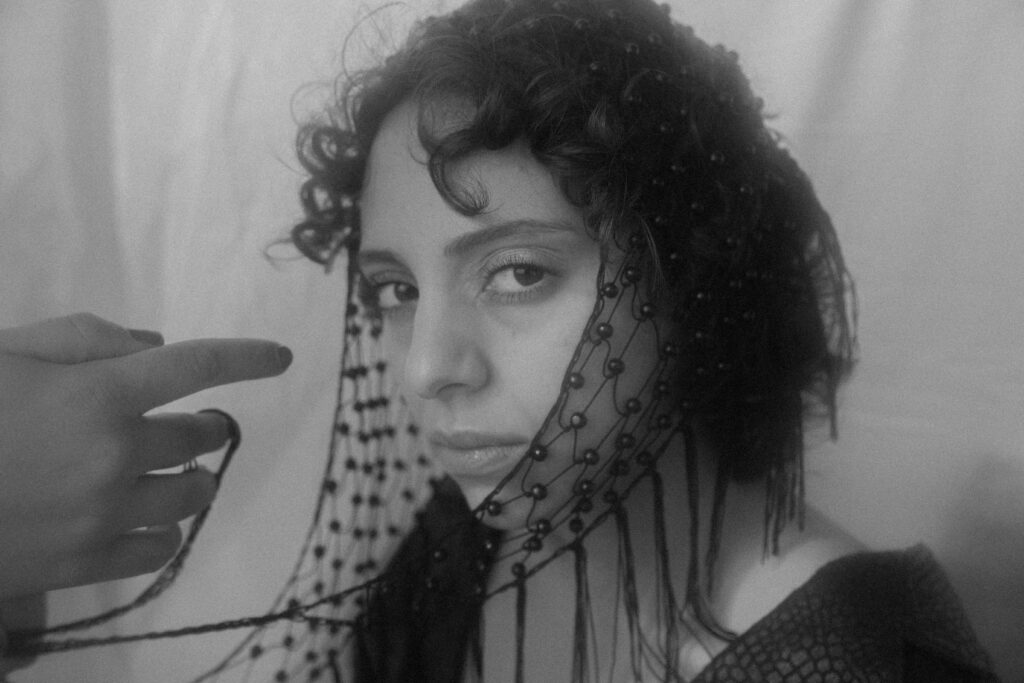
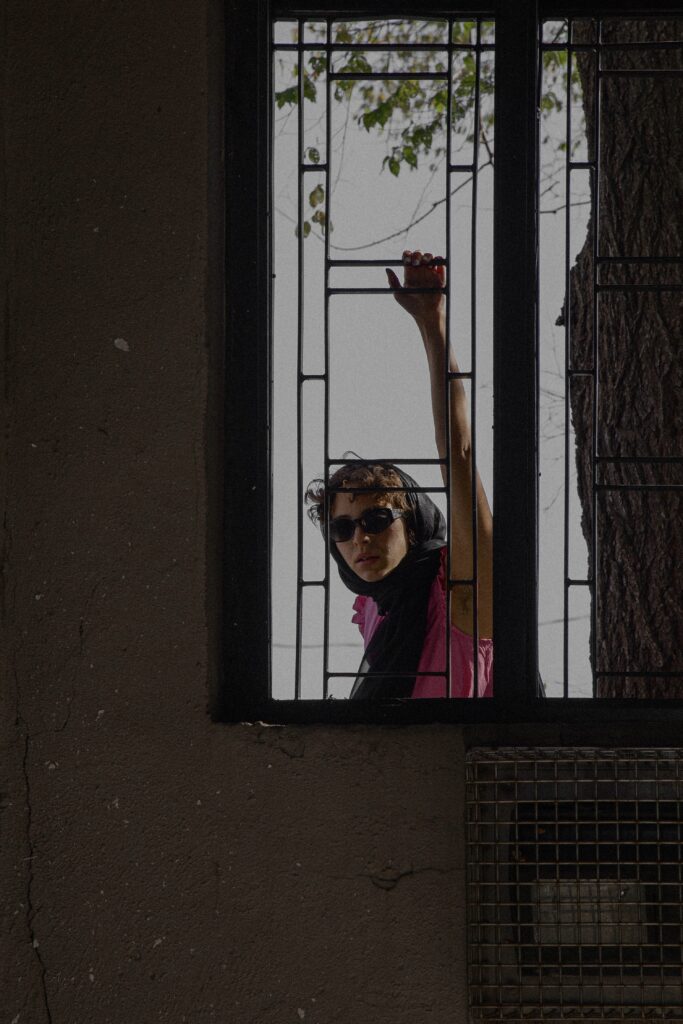
Photography by Saria Chatila; Modeled by Dina Shihabi
This piece encourages honesty and transparency that are intended to dismantle harmful and unnecessary boundaries. In their place, we offer healing and therapeutic spaces, an opportunity for other Arabs to feel less alone. It’s okay to express our dark sides, to heal, and be vulnerable collectively.
We’re taught that there’s one way to be Arab, but the diaspora teaches the endless ways to be Arab.
Dina Shihabi
Haramiyeh (sinners or thieves) represent an expressive Arab identity, one that shies away from the fear of a tainted sum3a (reputation). Haramiyeh represents the rejection of an identity bounded by the walls of patriarchal logics, and encourages both the making and occupying of space. You don’t have to choose between fully appropriating or surrendering to your Arab identity, but can redefine your Arab identity in a way that serves you and celebrate unbounded rituals and traditions.
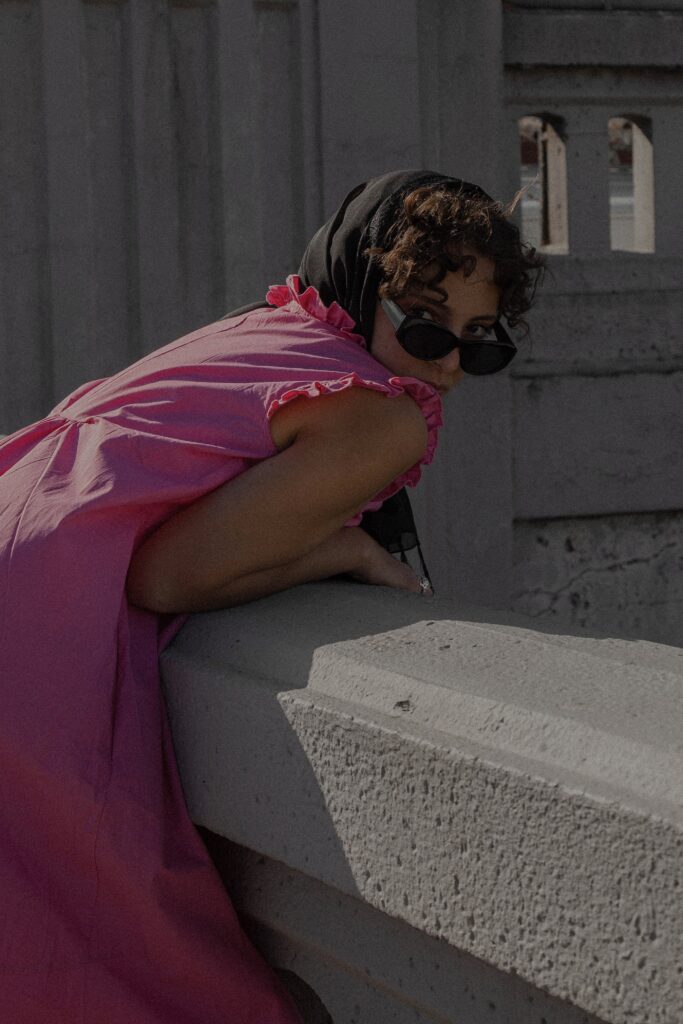
Photography by Saria Chatila; Modeled by Dina Shihabi
Haramiyeh is a raw project, a transparent space, a safe space, a space that admits flaws and promotes communal healing. It’s about being okay to open up and be vulnerable, about solidarity and feeling less alone. It’s about development and hope, and the beauty in being Arab. It asks us to reappropriate the word haram and redefines reputation.
The scent of oud finally smells like smoky heaven, the flavor of dates finally tastes like rejuvenating caramel, and our oriental tunes finally sound like orgasmic melodies. The Arab world needs a feminist revolution.
My tea has never been sweeter.
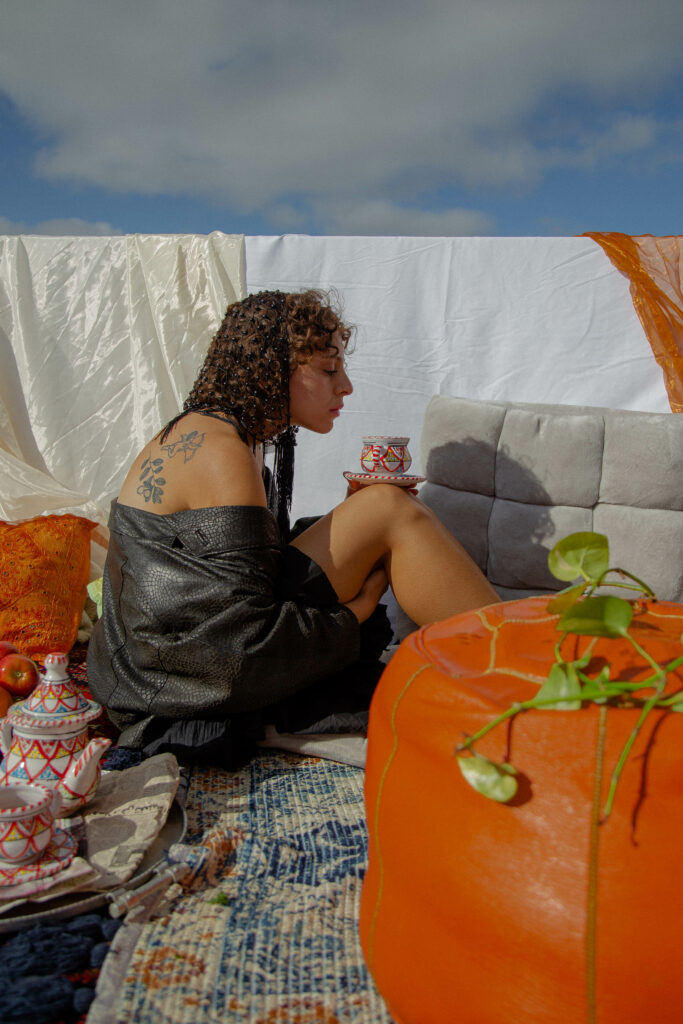
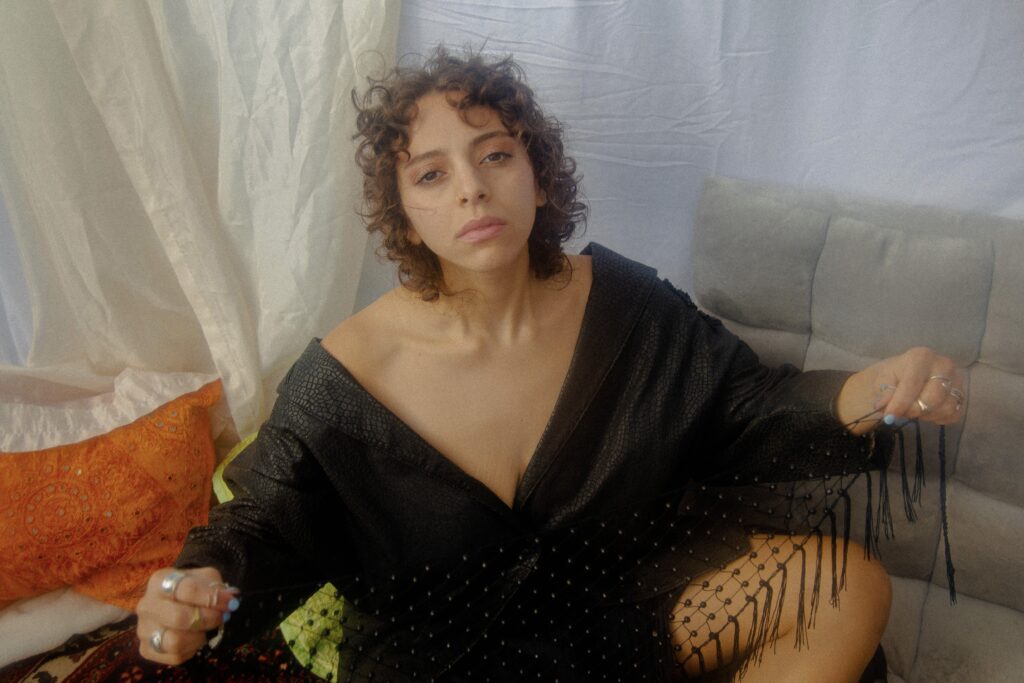
Photography by Saria Chatila; Modeled by Dina Shihabi
Ma kat 7eshmish? Kif btestarji? Our societies normalize chaos, misery, and trauma in the name of an imaginary untainted reputation.
Dina Shihabi
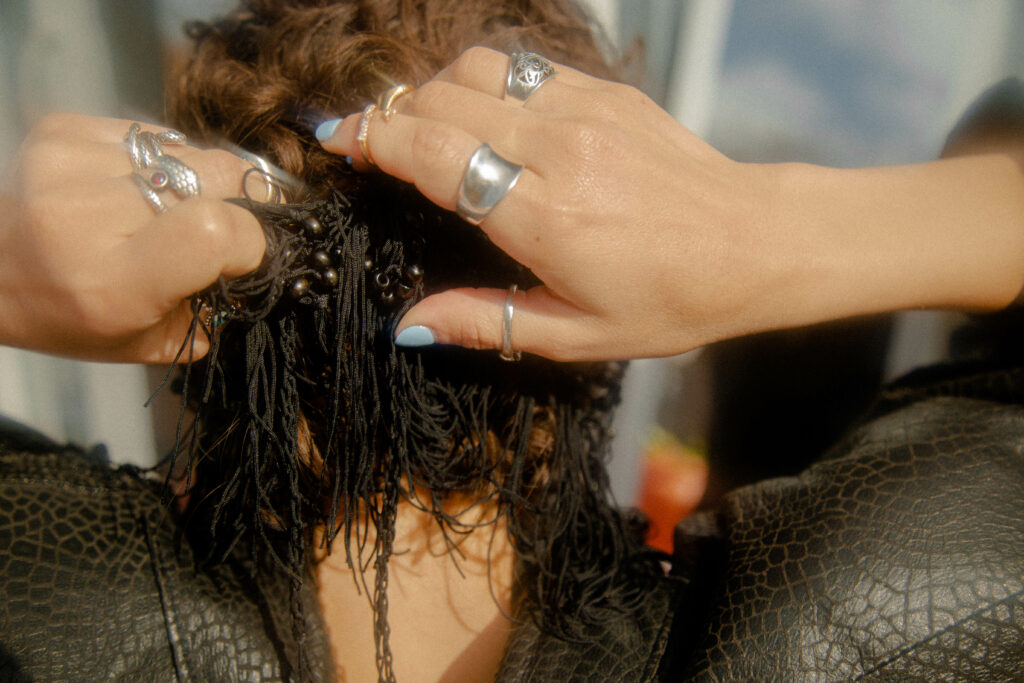
Photography by Saria Chatila; Modeled by Dina Shihabi

